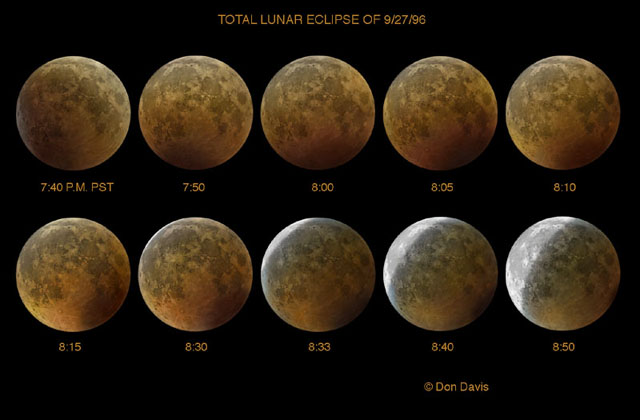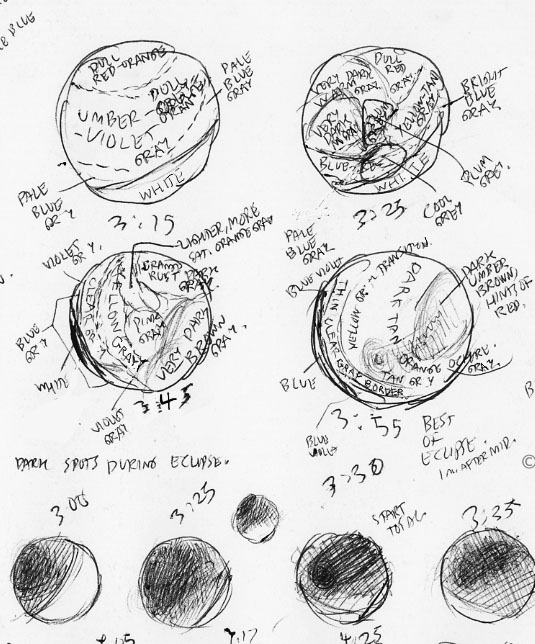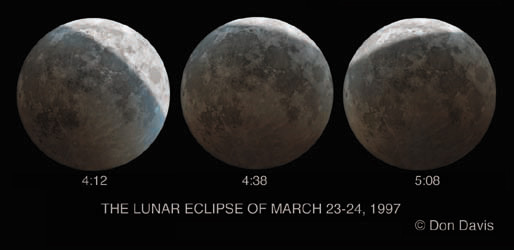

These drawings are part of my 'cleaned up' field sketches, made of the September 6 1979 Lunar Eclipse from dark Grass Valley, California. I found it useful to quickly divide the disk into discreet zones of color and brightness. Later I refined the technique with drawing on pre-printed Lunar maps to save time and provide landmarks upon which to draw shadow and color boundaries. This eclipse was relatively subtle compared with many others, lacking most of the coppery glow characteristic of most such events. The Moon is in effect seeing the light of all the sunrises and sunsets happening at that moment when it is in the Earths shadow. Photographs of this event generally garishly reddened the shadowed Moon, I saw many subtle colors through binoculars and the eye.
Later I would sketch such events with the eye aided by a tripod mounted pair of binoculars, a 6 inch or 10 inch telescope, and a small table with a subdued light source and a radio or clock for time reference.
As soon as possible after the event I make finished paintings of the event based on my still fresh memory and my field drawings. Sometimes the evening news carries images, useful for brightness and even color 'reality checks' if available. I think the best color photos of these dim eclipses will happen with tricolor photography, either with film or CCD cameras. Here are some of the finished color sketches, done in oil paints.


This Lunar eclipse was closer to the 'norm', with the ruddy glow of sunlight passing through the Earths atmosphere spilling into its shadow. There was a bluish border region as noted visually in past eclipses.
This Lunar eclipse was far more subdued, perhaps due to large amounts cloud cover and atmospheric dust. Most color films made even this eclipse appear a garish orange red.

The Lunar eclipse of May 15, 2003 was in progress as the Moon rose, but by the end of totality the Moon had climbed high enough to provide a good look at the shadow colors. This eclipse was of below average overall intensity, with brightness contours sometimes visibly displaced from those of the color zones which generally lay concentric to the curved border of the Earth shadow. The southwest portion of the shadow interior was more saturated in coppery color than the northeast, including a brighter yellow southern region late in the eclipse..
